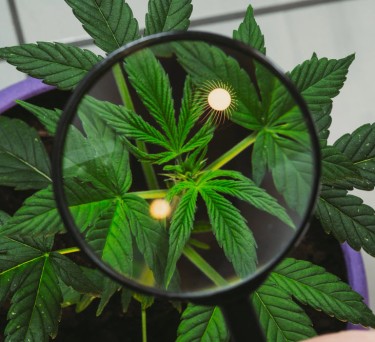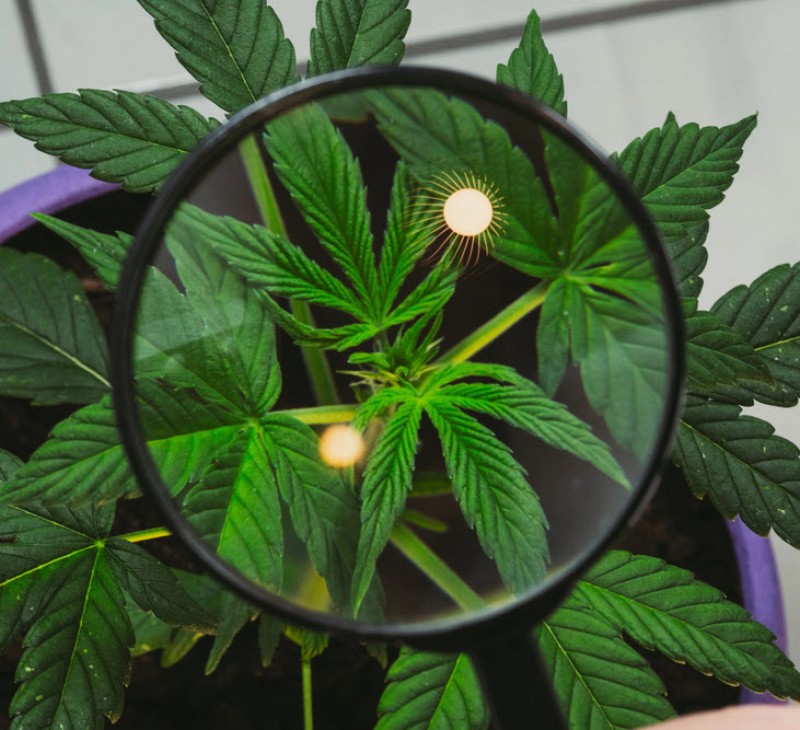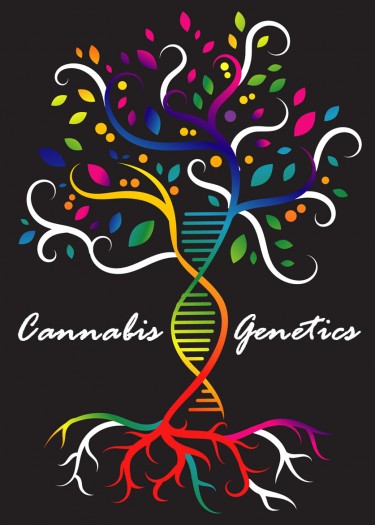
While scientists celebrate discovering 33 genetic markers that could revolutionize cannabis breeding, a darker story is unfolding in the background. The same market forces driving cannabis legalization are systematically destroying the plant's genetic diversity, creating what researchers call "the bottlenecking of cannabis genetics." We're witnessing a botanical catastrophe in real time—the homogenization of one of nature's most diverse and therapeutically complex plants.
A groundbreaking new study by Caleb Y. Chen at Cal Poly Humboldt reveals that legal cannabis markets are incentivizing growers to focus on a handful of traits—high THC content, fast flowering times, and maximum yield—while abandoning the thousands of unique varieties that evolved over millennia. The result is a genetic collapse that threatens to eliminate forever the very diversity that makes cannabis such a powerful medicine.
This isn't just an academic concern. When we lose cannabis genetic diversity, we lose potential cures for diseases we haven't even discovered yet. We lose unique combinations of cannabinoids and terpenes that might hold the key to treating conditions ranging from epilepsy to cancer. We lose the evolutionary wisdom embedded in landrace strains that survived environmental challenges for centuries.
The irony is devastating: just as scientists unlock the genetic tools to create designer cannabis strains tailored for specific medical conditions, market forces are eliminating the genetic raw material needed to make those breakthroughs possible. We're simultaneously gaining the ability to precisely breed cannabis while destroying the genetic foundation that makes such breeding meaningful.
This genetic bottlenecking represents more than just lost biodiversity—it's a cautionary tale about what happens when profit motives override conservation priorities. If we don't act quickly to preserve cannabis genetic diversity, future generations may inherit a plant stripped of its evolutionary complexity and therapeutic potential.
The Market Forces Driving Genetic Collapse
The legal cannabis industry operates under perverse incentives that systematically reward genetic uniformity over diversity. State regulations, consumer preferences, and economic pressures have created a perfect storm that's eliminating genetic variety at an unprecedented pace.
Testing regulations represent perhaps the biggest driver of genetic bottlenecking. Most legal states require cannabis products to be tested for potency, with results displayed prominently on packaging. This creates enormous pressure for growers to maximize THC content, regardless of other therapeutic compounds that might be more beneficial for specific conditions.
Chen's interviews with growers revealed that "their preference for High THC content in cultivars was due to state testing regulations and a misinformed consumer base, rather than grower partialities." Cultivators aren't choosing high-THC varieties because they believe they're superior—they're responding to market demands created by regulatory frameworks that reduce cannabis to a single number.
The economic pressures are equally destructive. As cannabis prices drop in mature markets, growers must maximize yield to remain profitable. This incentivizes fast-flowering, high-producing varieties while eliminating slower-growing strains that might offer unique therapeutic profiles. Dr. Grinspoon, a legendary landrace strain with a 24-week flowering period, exemplifies this problem. Multiple breeders described it as "special" with unique effects that laboratory testing doesn't capture, but its long flowering time makes it economically unviable in commercial markets.
Large-scale cultivation further accelerates genetic homogenization. Industrial cannabis operations need standardized varieties that flower simultaneously, respond predictably to environmental controls, and produce consistent yields. The complex genetic diversity that made cannabis famous—the subtle differences between phenotypes within the same strain—becomes a liability in commercial agriculture.
Commercial marketing creates additional pressure toward genetic uniformity. Brand recognition requires consistent products, so companies select varieties that produce identical effects and appearances across multiple harvests. The marketing appeal of named strains like "Girl Scout Cookies" or "OG Kush" incentivizes growers to focus on proven genetics rather than exploring new varieties.
These market forces operate at a global scale. Chen's research documented genetic contamination in traditional cannabis-growing regions worldwide. Wind pollination from commercial varieties is "wiping out landrace populations with 'contamination' from pollen via modern hybrids" in Morocco, Jamaica, Mexico, Thailand, and India. Traditional farmers who maintained unique genetics for generations are abandoning their heritage varieties for commercial strains that fetch higher prices.
The regulatory environment compounds these problems by making genetic preservation difficult. Seeds and clones can't cross state lines legally, preventing the kind of genetic exchange that maintains diversity in other crops. Many states prohibit home cultivation, eliminating small-scale growers who might preserve unusual varieties for personal use rather than commercial profit.
The result is genetic bottlenecking at an unprecedented scale. Chen notes that "in 2025, just a handful of Cannabis cultivars are grown at all levels of the Post-Prohibition landscape." The plant that once displayed enormous genetic diversity across different geographic regions is being reduced to a few commercial varieties optimized for industrial production.
The Extinction of Wild Cannabis: Losing Our Genetic Foundation
Perhaps the most alarming finding in Chen's research is the effective extinction of wild cannabis varieties. Unlike other crops that maintain wild relatives as genetic reservoirs, cannabis appears to have lost its original genetic foundation entirely. This represents a botanical catastrophe with implications far beyond the cannabis industry.
"Recent genetics studies of Cannabis collections continue to suggest that wild specimens of Cannabis have gone extinct and existing 'wild' cannabis plants are feral escapees of domesticates," Chen's research reveals. What we consider "wild" cannabis today are actually descendants of cultivated varieties that escaped human control, not truly wild populations that evolved independently.
This extinction occurred through multiple mechanisms. Wind pollination allowed genes from domesticated varieties to overwhelm wild populations, essentially breeding them out of existence. Human activity eliminated natural habitats where wild cannabis might have survived. Most significantly, thousands of years of selective breeding created such genetic distance between cultivated and wild varieties that hybrid offspring displaced original populations.
The loss of wild cannabis genetics is particularly tragic because wild populations typically contain the greatest genetic diversity. In other crops, plant breeders regularly return to wild relatives when cultivated varieties encounter problems like disease susceptibility or environmental stress. Wild genetics provide the raw material for developing resistance to new challenges.
Cannabis has lost this genetic insurance policy. When current commercial varieties face problems—new pests, diseases, or environmental changes—breeders have no wild genetic reservoir to draw from. They're limited to the increasingly narrow pool of commercial genetics that survived the bottlenecking process.
The situation is worsening rapidly. Chen documents how wind pollination from commercial varieties continues eliminating landrace populations worldwide. Traditional cannabis-growing regions that maintained unique genetics for centuries are seeing their heritage varieties overwhelmed by pollen from commercial operations. This genetic contamination is irreversible—once landrace genetics are lost, they cannot be recovered.
Morocco, famous for hashish production using traditional varieties adapted to local conditions, has seen widespread genetic contamination from European and American hybrids. Mexican landrace strains that evolved over centuries are being replaced by commercial varieties. Thai stick genetics, legendary among cannabis connoisseurs, are disappearing as local farmers adopt faster-flowering commercial strains.
The irony is that legalization, which should have promoted genetic preservation, is actually accelerating genetic loss. When cannabis was illegal, isolated growing regions maintained distinct varieties through geographic separation. Legalization increased genetic exchange, but only in one direction—commercial varieties contaminating traditional ones.
This genetic erosion affects more than just cannabis diversity. Many landrace varieties co-evolved with local ecosystems, developing relationships with beneficial microorganisms, pest predators, and environmental conditions. When these varieties disappear, we lose not just the plants themselves but the ecological relationships they represent.
The Medicinal Catastrophe: Losing Therapeutic Potential
The genetic bottlenecking of cannabis represents a medical catastrophe that we're only beginning to understand. As commercial markets focus on high-THC varieties optimized for recreational use, we're systematically eliminating the genetic diversity that makes cannabis such a powerful medicine.
Traditional landrace varieties often contained complex cannabinoid and terpene profiles that developed over centuries of natural selection and human cultivation. These profiles represented evolutionary solutions to environmental challenges that might translate into therapeutic benefits for human health conditions. When we lose these varieties, we lose potential treatments for diseases we haven't even learned to recognize yet.
The recent discovery of cannabielsoxa, a new cannabinoid with anti-cancer properties, illustrates what we might be losing. This compound was found in specific cannabis varieties through targeted research. How many other therapeutic compounds exist in landrace varieties that we'll never discover because those genetics have been eliminated by market forces?
Dr. Grinspoon serves as a perfect example of this therapeutic loss. Despite being described by multiple breeders as having unique effects not captured by standard laboratory testing, its 24-week flowering period makes it economically unviable in commercial markets. The therapeutic compounds that make Dr. Grinspoon special—whatever they are—risk being lost forever because they don't align with commercial production timelines.
The problem extends beyond individual varieties to the loss of genetic combinations that created unique therapeutic profiles. Traditional breeding often involved crossing varieties from different geographic regions, creating novel combinations of cannabinoids and terpenes. Modern commercial breeding focuses on proven genetics, eliminating the experimental crosses that might yield breakthrough medical discoveries.
Terpene diversity represents a particularly significant loss. While research focuses primarily on major cannabinoids like THC and CBD, terpenes contribute significantly to cannabis's therapeutic effects through the "entourage effect." Landrace varieties often contained unique terpene profiles adapted to local growing conditions. These profiles might have therapeutic applications we haven't yet discovered.
The genetic markers identified by Canadian researchers could theoretically help preserve and recreate lost therapeutic profiles, but only if the underlying genetics still exist. Once specific alleles are lost from the gene pool, even advanced breeding techniques cannot recreate them. The genetic markers are tools for manipulation, not resurrection.
Patient communities that rely on specific cannabis varieties for medical conditions face particular risks from genetic bottlenecking. Families that moved across the country to access strains like Charlotte's Web for pediatric epilepsy could find themselves without options if those specific genetics disappear from commercial production.
The standardization demanded by medical markets paradoxically threatens medical applications. Pharmaceutical-style consistency eliminates the genetic variation that might make specific phenotypes more effective for individual patients. We're trading therapeutic diversity for regulatory compliance.
Preservation Efforts: Racing Against Genetic Extinction
The cannabis community is slowly awakening to the genetic crisis, with preservation efforts emerging from unexpected quarters. Craft cultivators, seed collectors, and cannabis enthusiasts are beginning to recognize their role as genetic custodians in an industry focused on commercial homogenization.
Several organizations have emerged specifically to preserve cannabis genetic diversity. The Cannabis Conservation Coalition works to document and preserve endangered cannabis varieties before they disappear completely. Phylos Bioscience, despite controversy over their business practices, has collected genetic samples from thousands of cannabis varieties for potential future preservation.
Open-source genetics movements encourage breeders to share unusual varieties rather than hoarding them for commercial advantage. The concept of "heirloom" cannabis varieties—maintained by small-scale growers for genetic preservation rather than commercial production—is gaining traction among conservationist-minded cultivators.
International preservation efforts face significant challenges due to cannabis's legal status. Unlike other crops that benefit from international seed banks and genetic exchange programs, cannabis preservation must operate within the constraints of national prohibition laws. This fragmentation makes coordinated preservation efforts nearly impossible.
Some traditional growing regions are implementing their own preservation programs. Moroccan farmers are working to maintain traditional hashish genetics despite pressure to adopt commercial varieties. Mexican cultivators are documenting landrace varieties before they disappear completely. These efforts often lack institutional support due to cannabis's legal status.
The 33 genetic markers identified by Canadian researchers offer hope for more sophisticated preservation strategies. By understanding which genetic markers control specific traits, breeders could potentially maintain complex genetic profiles while adapting varieties for commercial viability. Fast-flowering versions of slow-growing medicinal varieties might preserve therapeutic genetics while meeting market demands.
Cryogenic seed preservation represents another promising approach. Properly stored cannabis seeds can remain viable for decades, providing a genetic backup for varieties that might otherwise be lost. Several private collectors maintain seed libraries with thousands of varieties, though these efforts remain uncoordinated and vulnerable to loss.
Digital documentation of genetic profiles could help preserve information about lost varieties even if the genetics themselves disappear. Comprehensive testing of existing varieties before they're eliminated could provide blueprints for future recreation using genetic engineering techniques.
However, preservation efforts face an uphill battle against market forces that operate at industrial scale. Individual collectors and small-scale preservation programs cannot compete with the genetic homogenization driven by commercial agriculture and regulatory frameworks.
The Sticky Bottom Line
The genetic bottlenecking of cannabis represents one of the most tragic consequences of prohibition and commercialization. We're witnessing the systematic destruction of genetic diversity that took millennia to develop, driven by market forces that prioritize short-term profits over long-term genetic sustainability.
The irony is profound: just as scientists unlock the genetic tools to create precision cannabis medicine, we're eliminating the genetic diversity that makes such precision possible. The 33 genetic markers that could revolutionize cannabis breeding are useless without the genetic variety they were designed to manipulate. We're gaining the ability to precisely modify cannabis genetics while destroying the genetic foundation that makes modification meaningful.
This genetic collapse isn't inevitable—it's the result of policy choices and market structures that could be changed. Regulations that focus solely on THC content create artificial pressures toward genetic uniformity. Commercial agriculture that prioritizes yield over diversity eliminates varieties that might have enormous therapeutic value. Legal frameworks that prevent genetic exchange between regions fragment preservation efforts.
The cannabis community must recognize genetic preservation as a moral imperative. Every lost variety represents potential medical breakthroughs that future generations will never access. Every landrace strain that disappears eliminates genetic solutions to environmental and medical challenges we haven't yet encountered.
Preservation requires more than just good intentions—it needs systematic effort and institutional support. Cannabis genetic libraries, heirloom variety preservation programs, and open-source genetics initiatives deserve the same support and funding as preservation efforts for other crops. The legal status of cannabis cannot be allowed to prevent genetic conservation efforts.
Commercial cannabis companies have a particular responsibility to support genetic preservation. The industry that profits from cannabis genetics should invest in maintaining the genetic diversity that makes their business possible. Genetic preservation isn't just environmental responsibility—it's business insurance against future challenges.
Individual cultivators and consumers also play crucial roles. Choosing diverse varieties over commercial standards sends market signals that genetic diversity has value. Supporting craft cultivators who maintain unusual genetics helps preserve varieties that industrial agriculture might eliminate.
The window for genetic preservation is closing rapidly. As commercial markets mature and consolidate, genetic bottlenecking will accelerate. Traditional growing regions continue losing their heritage varieties to commercial contamination. Every day of inaction makes genetic recovery more difficult and expensive.
We stand at a crossroads in cannabis history. We can continue allowing market forces to eliminate genetic diversity in pursuit of short-term profits, or we can recognize genetic preservation as essential for cannabis's future medical and agricultural potential. The choice we make today will determine whether future generations inherit a genetically diverse cannabis plant capable of addressing their medical needs, or a homogenized commodity stripped of its evolutionary wisdom.
The genetic collapse of cannabis is preventable, but only if we act quickly and decisively. The plant that survived thousands of years of human cultivation and natural selection deserves better than extinction by spreadsheet. Our responsibility to preserve cannabis genetic diversity isn't just about maintaining biodiversity—it's about preserving hope for future medical breakthroughs that could transform human health.
The cannabis genetics crisis demands immediate action. The question isn't whether we can afford to invest in genetic preservation—it's whether we can afford not to.






